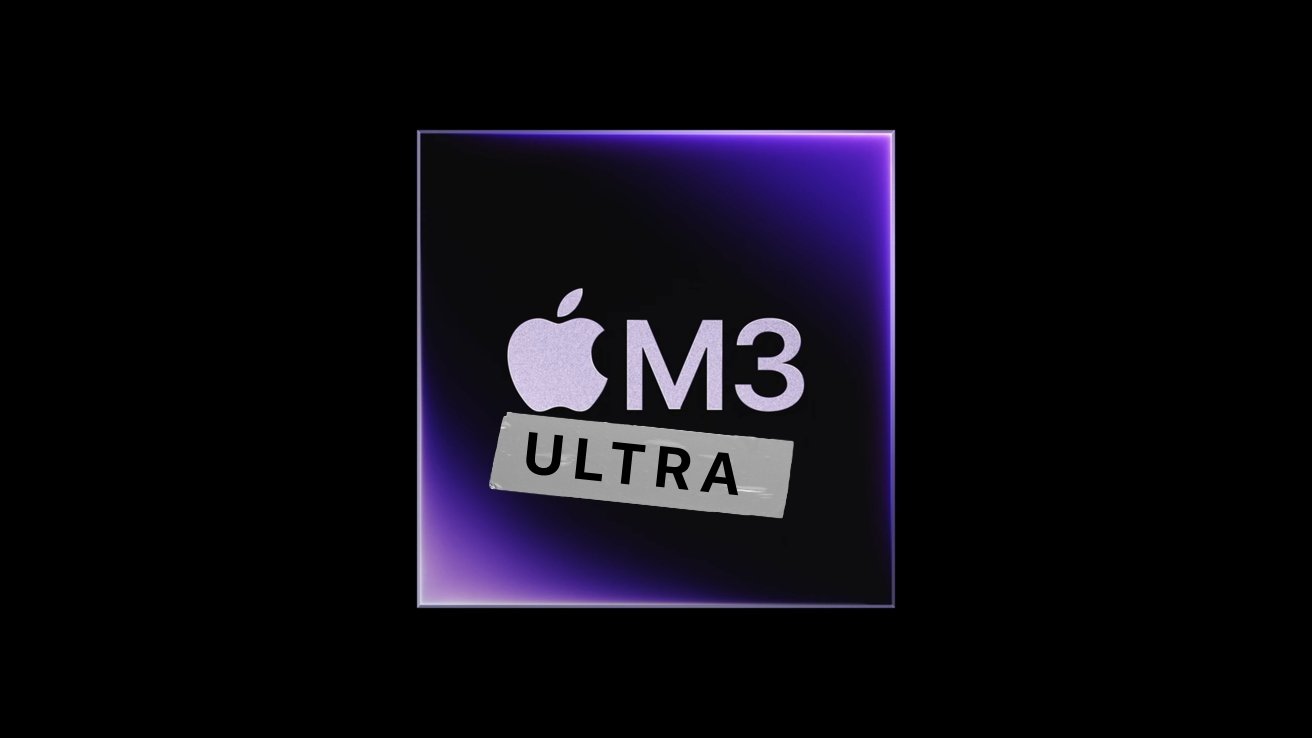Apple's M3 Ultra chip will probably have 80 graphics cores available to users, a report proposes, with what could be the last remaining M3-generation chip expected to be massively powerful.
The Apple Silicon lineup in M1 and M2 established a pattern for the chip families, with the Ultra edition effectively offering twice the core counts and other elements of the Max version. This is because Apple effectively connected two Max chips with an interconnect and called them the M1 Ultra and M2 Ultra.
In Sunday's "Power On" newsletter for Bloomberg, Mark Gurman latches on to to the doubling mechanic in discussing what could end up being the M3 Ultra.
Gurman starts with the proposal that the M3 Ultra could have "a whopping 80 graphics cores." That is before explaining that the generations of Apple Silicon have a baseline version, a "Pro" with more CPU and GPU cores, a Max with double the graphics cores, and the Ultra that doubles both types of cores compared to the Max.
For M2, the Pro had up to 12 CPU cores and 19 graphics cores, the M2 Max had 12 CPU cores and 38 graphics cores, and the M2 Ultra went up to 24 CPU cores and 76 graphics cores.
However, "Apple deviated a bit from that approach with the new M3 line," Gurman writes. The M3 Max included more CPU cores as well as a doubling of GPU cores.
"This has implications for the M3 Ultra, which Apple hasn't announced yet," it is proposed. If continues doubling CPU and graphics cores for the Ultra, the Mac chip could end up with 32 CPU cores and 80 graphics cores.
Similarly, if memory is updated again, it's probable that Apple could include a configuration option for 256 gigabytes.
Gurman believes that the details of the Ultra edition will be known within months as testing commences, and that a launch will happen sometime in 2024.
 Malcolm Owen
Malcolm Owen








 Amber Neely
Amber Neely
 Andrew Orr
Andrew Orr

 Sponsored Content
Sponsored Content

 William Gallagher
William Gallagher









31 Comments
Wonder if the price will be close to the prior generation like last time?
I may be tempted this time and take my M1 Ultra Mac Studio (128GB & 8TB SSD) and use it as my file server to replace the aging and soon to be unsupported Intel i7 powered Mac mini (64GB OWC Ram and 2 TB soldered SSD). The M1 Mac Studio trade in value is less than a possible M3 Pro mini with maximum memory and a 2 TB SD. and probably will be supported for quite a few more years.
I remember in the 70s that a 32kb memory card from Digital Equipment Corp (DEC) for my PDP-11 cost $2,000. Every generation that followed in the same form factor doubled the amount of memory for the same $2,000. The last one was 4MB. I used 1.5MB for programs and 2.5MB as a virtual swap disc for compiling Dibol code which was blazingly faster than any of the spinning platters of the day.
And remember, $2,000 in the 70's was much more than $2,000 today.
But while more cores are nice, I'd prefer more time spent on "smart" utilization of those cores. For example, over the decades there have been many development languages for Mac, Current examples would be Xojo, X, and Swift. But trying to take advantage of those multiple cores is a major challenge with them and often the overhead - especially when development time and maintenance are factored in - exceeds the benefit.
A simple answer is, "Well that application is not one fit for parallel processing." But is that always the case? I'd like the compiler to say, "Well, well, well, looks like I have 8 (or more) CPU cores. How can I segment this code so it executes in the shortest possible time?"
In other words, it seems like the field where it's beneficial to have multiple cores is pretty narrow. Sure, it makes great marketing copy. But it seems that unless one is actively involved in video editing, multiple cores, CPU or GPU, will hardly make any difference.
Why stop at 80. Why not 90, or 100, or a bazillion. The skies the limit.
32 CPU cores and 80 GPU cores and a blazing fast neural engine. If i had the money i would buy it. A computer like this makes me loose all rational thinking, ability to use consonants in speech, mutter 1.21 gigawatts and pine for the fjords.
My workload use cases do not demand as much horsepower, but i can imagine that it must be an amazing time to work with heavy lifting workloads. Apple Studio with M?Ultra is very reasonably priced, seems cheap to me actually. I remember back in the day when people used to pony up a small fortune to get a Sparc station 5 on their desk.
Life as a computer enthusiast has never been this good and Apple leads the way.
Does anyone feel there is any merit to the rumours of a further interconnect between 2 M?Ultras into something even more extreme?
Would there even be an idea to package up many M3 Ultras into compute nodes like Nvidia is doing with their chips? The power draw from the M3 Ultra is nothing compared to their chips. Maybe this is something for Apple’s iCloud.